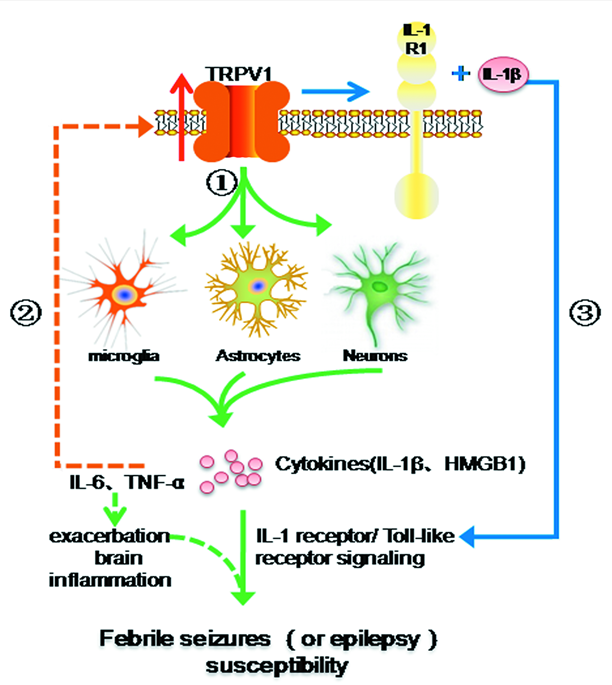
Biwen Peng, M.D, Ph.D
E-mail: xianrongzh@whu.edu.cn
Office Address: Building No.1, DongHu Road 185#, Wuhan, Hubei, 430071
Position(s): Professor
Affiliation(s): Department of Physiology
Research interests / Specialties: neurophysiology and ion channels-related diseases
Education and Training
Medical Degree, 1992-1997 Wuhan University, China
M.Sc., 1997-2000 Wuhan University, China
Ph.D., 2000-2003 Wuhan University, China
Post-doctoral training, 2004-2007 University of Texas, Health Science Center at San Antonio, U.S.A
Research Description
Research in our laboratory aims to understand the behavioral, neural and immune mechanism of ion channel related neurological disease.
We take a multidisciplinary approach including molecular biology and electrophysiology to investigate the role of membrane receptors and ion channels, especially the transient receptor potential (TRP) channels, Voltage-gated potassium channels, on seizures and epilepsy in immature brain.Research Description
Research in our laboratory aims to understand the behavioral, neural and immune mechanism of ion channel related neurological disease.
We take a multidisciplinary approach including molecular biology and electrophysiology to investigate the role of membrane receptors and ion channels, especially the transient receptor potential (TRP) channels, Voltage-gated potassium channels, on seizures and epilepsy in immature brain.

Publication list
1. Huang WX, Yu F, Sanchez RM, Liu YQ, Min JW, Hu JJ, Bsoul N, Han S, Yin J, Liu WH, He XH, Peng BW*. TRPV1 promotes the occurrence of repetitive febrile seizures by increasing the secretion of pro-inflammatory cytokines in the immature brain. Brain Behavior Immunity. 2015.
2. Liu YQ, Huang WX, Sanchez RM, Min JW, Hu JJ, He XH, Peng BW*. Regulation of Kv4.2 A-Type Potassium Channels in HEK-293 Cells by Hypoxia. Front Cell Neurosci. 2014.
3. Liu YQ, Yu F, Liu WH, He XH, Peng BW*. Dysfunction of hippocampal interneurons in epilepsy. Neurosci Bull. 2014
4. Huang WX, Min JW, Liu YQ, He XH* and Peng BW*. Expression of TRPV1 in the C57BL/6 mice brain hippocampus and cortex during development. Neuroreport. 2014, 25:379–385
5. Kong WL, Min JW, Liu YL, Li JX, He XH and Peng BW*. Role of TRPV1 in susceptibility of PTZ-induced seizure following repeated hyperthermia challenges in neonatal mice. Epilepsy & Behavior. 2014, 31:276-80.
6. Xu J, Fan Y, Li L, Qiu Y, Wang Z, Han S, Yin J, Liu W, Peng B* and He X. Hyperthermia-induced seizures: Development of hyperthermia-prone and hyperthermia-resistant rats. Epilepsy Research. 2013, 106 (3): 311-317
7. Min JW, Peng BW*, He XH, Zhang YA and Li JX. Gender difference in epileptogenic effects of 2-BFI and BU224 in mice. European Journal of Pharmacology. 2013, 718(3): 81-86.
8. Min JW, Liu WH, He XH and Peng BW*. Different types of toxins targeting TRPV1 in pain. Toxicon. 2013, 71: 66-75.
9. Peng BW*, Justice J, He XH and Sanchez RM. Decreased A-currents in hippocampal dentate granule cells after seizure-inducing hypoxia in the immature rat. Epilepsia. 2013, 54: 1223-1231
10. Yu F, Han S, Liu WH, Wang YC, Liu YL, Yin J, Wang H, Peng BW* and He XH. Thermal Regulation of KCNQ2 Potassium Channels. American Journal of Biomedical Sciences, 2012, 4(4): 333-339
11. Yu HM, Liu WH, He XH and Peng BW*. IL-1β:an important cytokine related with febrile seizures. Neuroscience Bulletin. 2012, 28(3): 301–308
12. Yu F, Liu Y, Wang Y, Yin J, Wang H, Liu W, Peng B*, He X. Protective effect of the KCNQ activator flupirtine on a model of repetitive febrile seizures. Epilepsy Research. 2011, 97: 64-72
13. Peng BW*, Justice J, Zhang K, Li JX, He XH and Sanchez RM Gabapentin Promotes Inhibition by Enhancing Hyperpolarization-activated Cation Currents and Spontaneous Firing in Hippocampal CA1 Interneurons. Neuroscience Letters. 2011, 494: 19-23.
14. Peng BW*, Justice J, Zhang K, He XH and Sanchez RM. Increased Basal Synaptic Inhibition of Hippocampal Area CA1 Pyramidal Neurons by Antiepileptic Drugs that Enhance Ih. Neuropsychopharmacology. 2010, 35(2): 464-472.
Lin J, Lin X, Yang GH, Wang Y, Peng BW*, Lin JY. Toxoplasma gondii: Expression of GRA1 gene in endoplasmic reticulum promotes both growth and adherence and modulates intracellular calcium release in macrophages. Experimental Parasitology. 2010,125:165-171.


